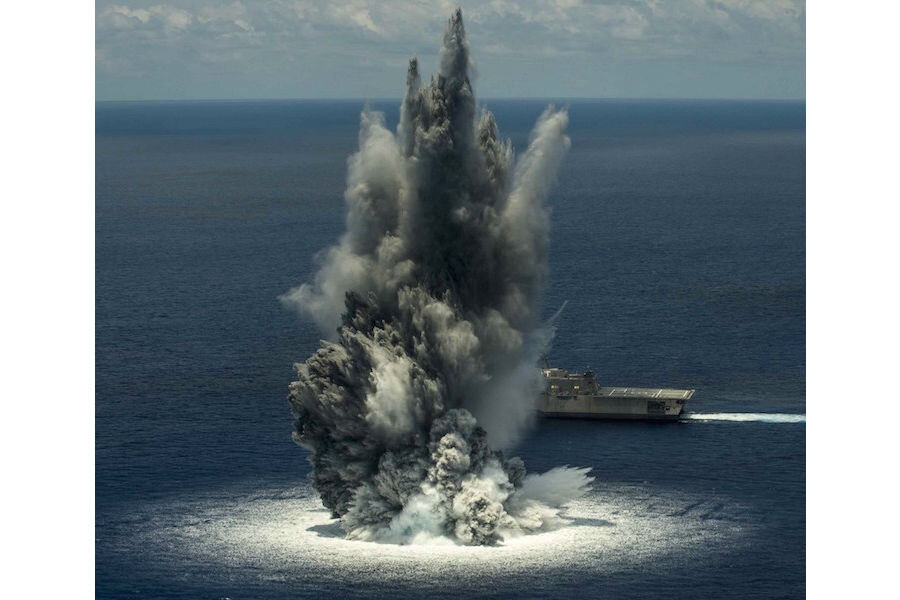Not an earthquake: US Navy explains vibrations in Florida
Loading...
Floridians startled by a distant vibration on Saturday received another surprise on Monday, when the US Navy "confessed" to causing the vibrations with an "experimental explosion."
The 3.7 magnitude seismic event was initially thought to be caused by a tectonic process, possibly the result of thermal relaxation, or heat left over from rifting that opened the Atlantic Ocean starting about 180 million years ago, as Ray Russo, associate professor of Geological Sciences at the University of Florida, told First Coast News Monday.
The U.S. Geological Survey has since recategorized the event as an "experimental explosion," after it was informed of the Navy's months-long testing by a member of the press, and the Navy confirmed its activity. Paul Earle, seismologist for the USGS, emphasizes that the event is no longer considered an earthquake in an phone interview with The Christian Science Monitor. The Navy is expected to release a statement this week, Dale Eng, a public information officer for the Navy’s Sea Systems Command in Washington, told The Daytona Beach News-Journal.
“I’m interested that the Navy is releasing a statement," Dr. Russo tells The Christian Science Monitor, as this is the first official Navy statement about testing he has heard about in his decades of research in Florida.
Unlike in North Korea, where test explosions have magnitudes of 4 to 5 and are easily detected by South Korean stations nearby, Russo says, the sources of vibrations off the Florida coast are not easily identified.
This is the second 3.7 magnitude seismic event in two months that has been confirmed as caused by an explosion off the east coast of Florida. Both were about 100 miles east north-east of the coast, the first off of Flagler Beach, and this most recent off Daytona Beach.
The tremors have been caused by testing of the USS Jackson. On June 10, the littoral combat ship endured a 10,000-lb. explosive charge, in the first of a series of controlled tests intended to assess the ship’s resilience.
After seismographs first detected activity in June, the USGS categorized the event as an earthquake, but the Navy this week claimed responsibility for that explosion as well.
When Bruce Presgrave, a geophysicist and shift supervisor at the Geological Survey’s National Earthquake Information Center in Colorado, saw a photo of the June 10 shock trial, he told News-Journal, “That’s a smoking gun, isn’t it?”
A large underwater explosion “would almost certainly be detected as an earthquake,” he told News-Journal.
Florida does not have a history of devastating earthquakes. In Florida’s recorded history, only one quake, in 1879, caused damage, according to the USGS.
“Every once in awhile there is a big earthquake, but we don’t really know the reason,” says Russo. Seismic activity on the US Atlantic coast is usually caused by mantle heating of the crust, he says. When the crust cools, it fractures into faults. Mapping the faults would take too much energy and money, Russo says.
The consequences of explosions such as these are small. Only 68 people felt the Saturday earthquake, according to First Coast News. Mr. Earle says he doesn’t see the possibility for damage in routine tests like these. “I’m sure they took the precautions” to make sure no damage was done, he says.
Professor Russo hopes the Navy will let the USGS and researchers know about explosions in the future. “We could use these data,” he says.
Editor's Note: This story has been updated to correct the full name and location of the U.S. Geological Survey and its National Earthquake Information Center.








